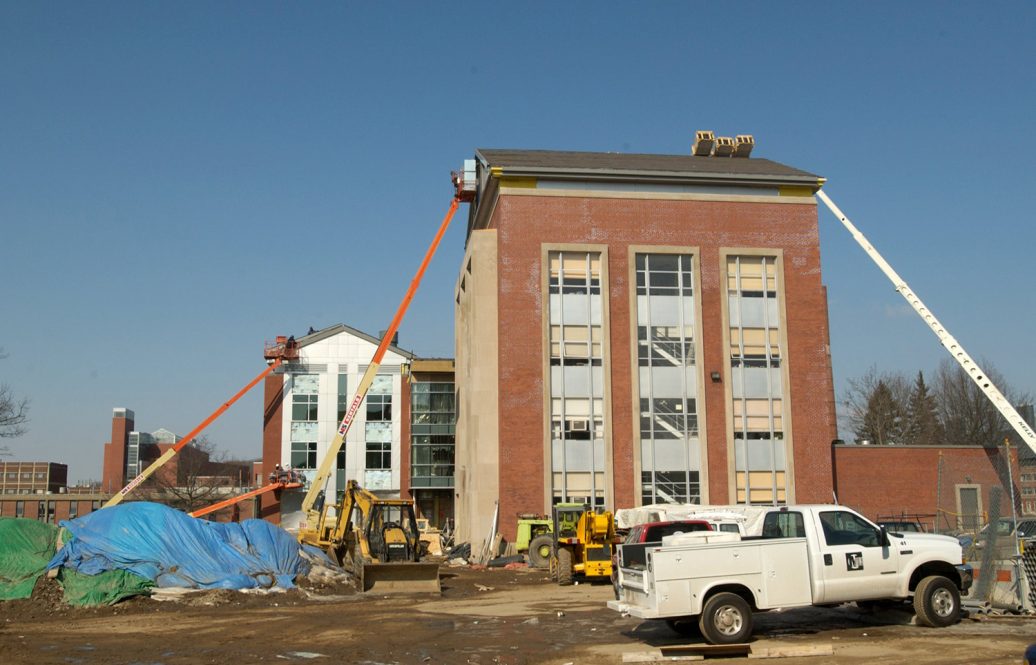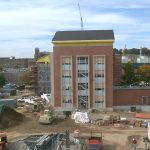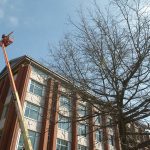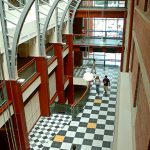Editor’s note: This semester, the Neag School of Education is celebrating 25 years as the Neag School and publishing a series of articles chronicling the impact that Ray and Carole Neag had on the School. This article is the second in the series.
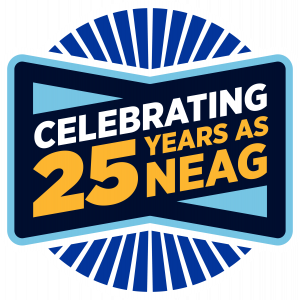 Ray and Carole Neag’s generosity toward the School of Education not only impacted the School’s faculty and students but changed its physical space as well. The Neags’ transformational $21 million gift in 1999 was a catalyst for the massive, two-phase addition and renovation to the School’s home on the Storrs campus: the Gentry Building.
Ray and Carole Neag’s generosity toward the School of Education not only impacted the School’s faculty and students but changed its physical space as well. The Neags’ transformational $21 million gift in 1999 was a catalyst for the massive, two-phase addition and renovation to the School’s home on the Storrs campus: the Gentry Building.
Located on Glenbrook Road, the Gentry Building was originally built in 1960. It is named after Charles B. Gentry, who served as director of the Division of Teacher Training until 1940 – when the division became the School of Education – and held the position of dean and twice served as the University’s acting president from 1921 to 1940.
More than 40 years after its initial construction, and just a couple of years after the Neags’ gift, the building received a $10 million addition. A 20,000-square-foot wing was added to the building’s west side, funded by the state’s UConn 2000 and 21st Century UConn budgets, as well as privately raised funds.
Up until this construction project, the Gentry Building had been facing environmental issues, and the School of Education’s faculty, staff, and classes were spread among several buildings. The number of individuals supported by grants had recently doubled, but there was no space for them to work. The new wing brought new opportunities, including additional offices; flexible space for accommodating conferences and classes; high-tech rooms; and an expansive atrium, which is now the heart of the School. When completed, the Gentry Building became the first wireless building at UConn Storrs.
From the outside, the new wing created a fresh architectural image for campus, while also following environmentally friendly building practices. The Gentry Building and nearby Rowe Center for Undergraduate Education were designed as mirror images of each other when they were both built in 1960, and the additions to the twin buildings continued that effect. Sculpted panels on the facades of the buildings consist of figures interwoven with words and phrases created by using the 12 letters found in “University of Connecticut.” The sculptor collaborated with School of Fine Arts students and faculty to create figures that appear to be walking toward the heart of campus.
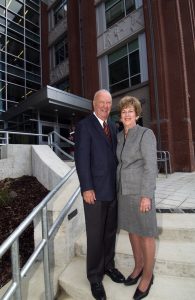
The new wing was dedicated in Fall 2004, with Ray and Carole Neag in attendance. Their generosity to the School inspired others to financially support the construction project, leading to the funding and naming of several spaces inside the updated building: the John and Carla Klein Classroom for Teacher Education, the Superintendent’s Seminar Room, and the Neag School Advisory Board Room.
“The transformation of this School has been nothing short of amazing,” said Richard Schwab, then-dean of the Neag School, at the dedication ceremony. “Our dream, when we began the design phase, was to build a facility with the very latest in technology that would enforce the concept of a community of learning; a place that celebrates the past but looks to the future; a place that demonstrates the centrality of education to the mission of the University of Connecticut.”
That addition was only the beginning of a two-phase construction project. The second phase — a $10 million overhaul and expansion of the original section of the building — began in May 2009 and finished in early 2010. It was mostly a reconfiguration to create additional faculty offices and meeting rooms.
“The breadth of the impact of Ray and Carole Neag’s generosity is truly amazing,” Dean Jason G. Irizarry says. “Their belief and investment in the School of Education and its mission inspired others to support the School, including with an updated Gentry Building. People don’t often think of physical space when giving to UConn, but it’s sometimes our biggest need to better support our students and faculty. In our case, it made all the difference in helping the Neag School become one of the top public schools of education in the nation.”
To learn more about the UConn Neag School of Education, visit education.uconn.edu and follow the Neag School on Instagram, Facebook, X, and LinkedIn.
